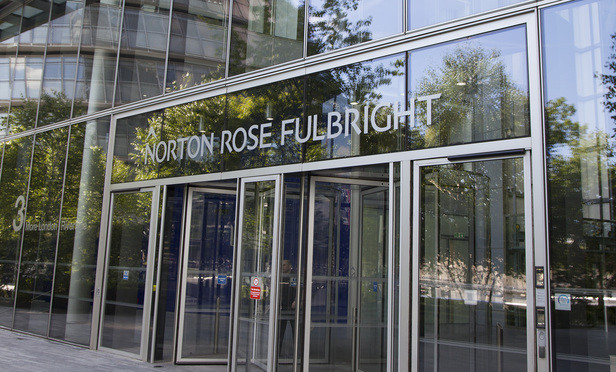Norton Rose Fulbright looks at the future of blockchain-automated insurance
The global law firm has released its second chapter on DLT technology, focused on the insurance industry.

Insurance requires the sharing of lots of sensitive commercial data between parties and many business lines are conducted by a traditional broker network. Blockchain and related distributed ledger technologies look like the preferred way to automate the insurance industry and optimise its disparate and duplicated systems of reconciliation.
Global law firm Norton Rose Fulbright has made insurance the focus of its second white paper on blockchain technology; its team of lawyers have done extensive work in the area of smart contracts, looking at uses of the technology within banking.
The latest paper envisages the complete digitisation of the insurance value chain. Insurance can be broken down into product, distribution, underwriting and placement, and claims and administration: a combination of big data, Internet of Things (IoT) and blockchain can create a platform approach that will blur these together.
Automation of this kind could change the broker/client relationship. According to the Association of British Insurers, as at 2016, brokers arrange 54% (£22bn/$28bn) of all general insurance businesses and 79% (£10.7bn) of all commercial insurance business.
Nicholas Berry, a partner in Norton Rose Fulbright's corporate and regulatory insurance team, said: "The insurance market is interested in DLT [distributed ledger technology] because of the amount of data that is shared and the amount of duplication in current insurance processes."
Berry gave the example of reinsurance where claims bordereaux, a report periodically furnished to a reinsurer by the ceding insurers or reinsurers, are held in traditional databases and verified by multiple parties, including insurers, reinsurers, third-party administrators, brokers and claims handlers, and where data and information is shared through the use of multiple systems and media.
"Think of a reinsurance transaction where you've got a book of business being insured, and then being reinsured perhaps by multiple reinsurers," said Berry. "You have, for example, broker slips, the insurance contract, and then the reinsurance contract, the bordereaux – and they are all transacting on the basis of the same information ultimately, but through several different media."
Using a blockchain, parties could view the information simultaneously and accept amendments. Policy and claims data could be produced with far greater accuracy, with the result that the bordereaux and reconciliation processes could be significantly reduced or even eliminated.
Other obvious uses for blockchains are areas like claims administration, where payment instructions could be automatically created when certain contractual criteria are met on a shared ledger. With a combination of DLT, smart contracts, the IoT and open data sources, the processing of claims could take place with limited human involvement, leading to significant reductions in the operating costs of the insurer.
Catastrophic events
In terms of product innovation, a smart contract (an agreement in digital form, signed and enforced on a blockchain) can be used to create catastrophe bonds, for example, covering weather or other risks with a parametric (event-driven) or index-linked trigger. Payouts to the insured or reinsured party are triggered based on the physical parameters of a catastrophic event, such as wind speed, the location of a hurricane or the magnitude and location of an earthquake, or on the basis of an index recording industry-wide losses in a particular geographic area in relation to a particular peril.
Motor insurance is another example of where products can be tied to automatic claims triggers. Indeed a motor insurance product might become fully automated (from policy issuance to claims settlement and associated services) using a combination of DLT and smart contract technology, running in conjunction with data fed in from IoT devices.
"The enemy of the underwriter is the unknown" states the paper, and underwriters have historically had to rely on the insured's honesty in terms of the provision of information on moral and physical hazards. Distributed ledgers may enable underwriters to more easily verify material facts relevant to a risk, such as the ownership, location or provenance of an asset or the insured's state of health or criminal record, as long as the information is recorded on a distributed ledger. Many "unknowns" in the underwriting process can therefore be removed before placement.
Best prices and terms
A distributed ledger-powered approach to insurance could herald real-time "auction" placements, where the digitising of insurance risks via platforms will mean insureds can hold direct capacity auctions to get the best pricing and terms available on the market – precluding the current notion of what an insurance broker is and does.
The paper looks ahead at governance systems and controls and what could happen if you start replacing aspects of existing insurance value chains with digital platforms. The question of who owns and runs these platforms will need to be settled by the industry.
Berry added: "Some people see these platforms as perhaps having a disintermediating effect and removing brokers. But brokers have fiduciary duties and obligations within that value chain and if they are removed from it, who do those duties fall on? Do they fall on the insurer? Or does the insured lose the benefit of them and do they cease to exist; how is that going to play out in the future?
"And in relation to smart contracts, insurers obviously have treating customer fairly obligations, and insurance has concepts like ex gratia payments. There are human considerations in claims handling. If you move to an automated model, how do you ensure that those treating customer fairly obligations and other insurance specific concepts are going to be retained?"
© Copyright IBTimes 2025. All rights reserved.






















